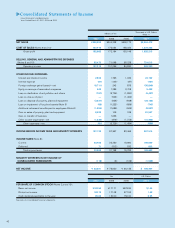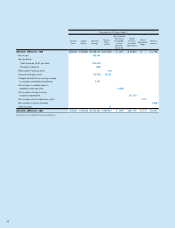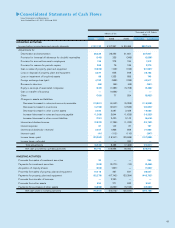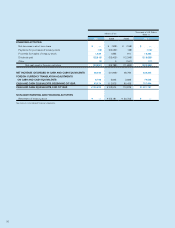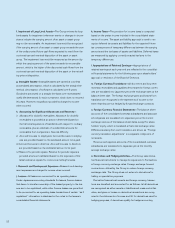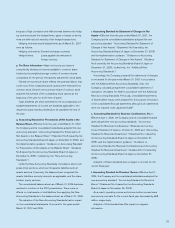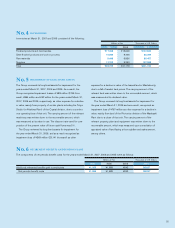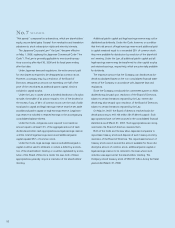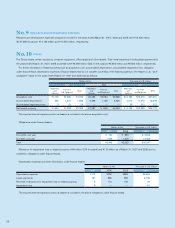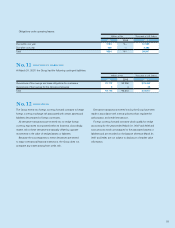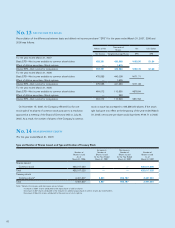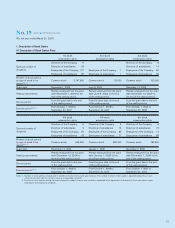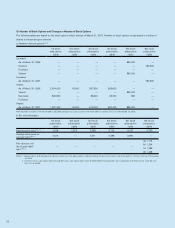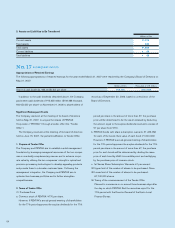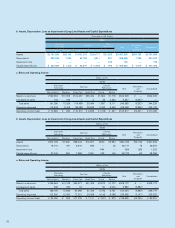Pentax 2007 Annual Report Download - page 58
Download and view the complete annual report
Please find page 58 of the 2007 Pentax annual report below. You can navigate through the pages in the report by either clicking on the pages listed below, or by using the keyword search tool below to find specific information within the annual report.
56
“Net assets” comprises four subsections, which are shareholders’
equity, accumulated gains (losses) from revaluation and translation
adjustments, stock subscription rights and minority interests.
The Japanese Corporate Law (“the Law”) became effective
on May 1, 2006, replacing the Japanese Commercial Code (“the
Code”). The Law is generally applicable to events and transac-
tions occurring after April 30, 2006 and for fiscal years ending
after that date.
Under Japanese laws and regulations, the entire amount paid
for new shares is required to be designated as common stock.
However, a company may, by a resolution of the Board of
Directors, designate an amount not exceeding one-half of the
price of the new shares as additional paid-in capital, which is
included in capital surplus.
Under the Law, in cases where a dividend distribution of surplus
is made, the smaller of an amount equal to 10% of the dividend or
the excess, if any, of 25% of common stock over the total of addi-
tional paid-in capital and legal earnings reserve must be set aside
as additional paid-in capital or legal earnings reserve. Legal earn-
ings reserve is included in retained earnings in the accompanying
consolidated balance sheets.
Under the Code, companies were required to set aside an
amount equal to at least 10% of the aggregate amount of cash
dividends and other cash appropriations as legal earnings reserve
until the total of legal earnings reserve and additional paid-in
capital equaled 25% of common stock.
Under the Code, legal earnings reserve and additional paid-in
capital could be used to eliminate or reduce a deficit by a resolu-
tion of the shareholders’ meeting or could be capitalized by a reso-
lution of the Board of Directors. Under the Law, both of these
appropriations generally require a resolution of the shareholders’
meeting.
Additional paid-in capital and legal earnings reserve may not be
distributed as dividends. Under the Code, however, on condition
that the total amount of legal earnings reserve and additional paid-
in capital remained equal to or exceeded 25% of common stock,
they were available for distribution by resolution of the sharehold-
ers’ meeting. Under the Law, all additional paid-in capital and all
legal earnings reserve may be transferred to other capital surplus
and retained earnings, respectively, which are potentially available
for dividends.
The maximum amount that the Company can distribute as divi-
dends is calculated based on the non-consolidated financial state-
ments of the Company in accordance with Japanese laws and
regulations.
Since the Company introduced the committees system in 2003,
dividends may be paid upon resolution of the Board of Directors,
subject to certain limitations imposed by the Law. Interim divi-
dends may also be paid upon resolution of the Board of Directors,
subject to certain limitations imposed by the Law.
On May 31, 2007, the Board of directors resolved cash divi-
dends amounting to ¥15,105 million ($127,954 thousand). Such
appropriations have not been accrued in the consolidated financial
statements as of March 31, 2007. Such appropriations are recog-
nized when the Board of directors resolves them.
Both of the Code and the Law allow Japanese companies to
repurchase treasury stock and dispose of such treasury stock by
resolution of the Board of Directors. The repurchased amount of
treasury stock cannot exceed the amount available for future divi-
dend plus amount of common stock, additional paid-in capital or
legal earnings reserve to be reduced in the case where such
reduction was approved at the shareholders’ meeting. The
Company retired treasury stock of ¥53,181 million during the fiscal
years ended March 31, 2006.
No. 7 NET ASSETS


